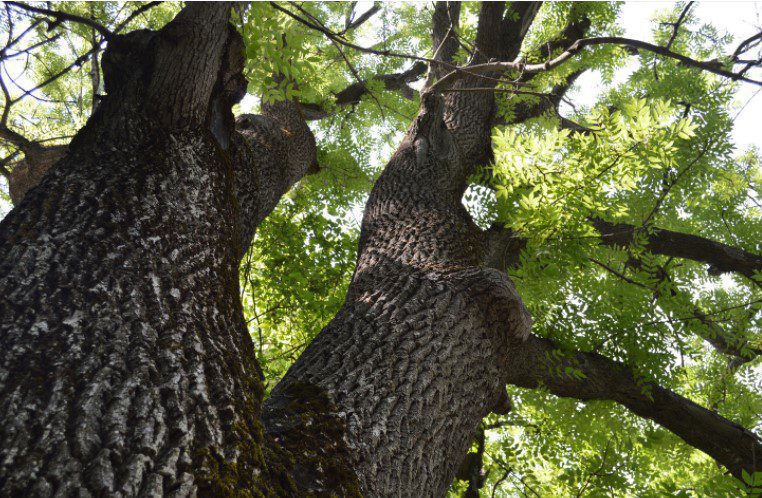Ash Tree And Emerald Ash Borer (EAB)
The ash tree is a division of the Fraxinus genus, which belongs to the Olive (Oleaceae) family of woody plants.
They are usually used as shade, lawn, and street trees and were once the most planted urban tree across the U.S.
You can identify ashes by looking for trees with opposite branching (not many trees do this) and compound leaves formed by clusters of leaflets. The bark of ashes can vary by species.
Dioecious trees are ashes. This means that each tree can have either male or female parts. Male trees can be selected if you don’t want the seeds/fruits to be messy. Similar to maple’s winged seeds, ash tree fruits are called samaras. They are often grouped on the stem.
Emerald Ash Borer (EAB)
The Emerald Ash Borer (EAB) is a damaging insect native to Asia that attacks and kills ash trees. It was first detected in the Detroit, MI/Windsor ON area in 2002.
This insect has since been detected in other parts of Ontario, Quebec, and the northeastern and midwestern United States.
The EAB has a significant impact on ash trees in both urban and natural settings.
Are you one of many homeowners with ash trees on your property and questions about their health and the potential for EAB infestation?
Researchers at Natural Ressources Canada’s Great Lakes Forestry Center have been gathering and developing information to help you understand what you need to know about EAB management.
How do you know if your ash tree is infested?
Scientists at Natural Resources Canada have been developing effective, reliable, and simple techniques to detect EAB infestations.
Signs and symptoms of EAB infestation include:
* Yellowing foliage
* Thinning tree crowns and dead branches
* Presence of woodpecker feeding holes on the trunk and branches
* Tree bark splitting or discoloration
* D-shaped exit holes 3-4 mm in diameter
* New shoots sprouting from various places on the trunk
Unfortunately, signs and symptoms of infestation may not appear up for two or even three years after the tree has been infested. When the insect is detected, damage can be pretty advanced, and treatment may not be effective.
Therefore, if you know of an EAB infestation in your city or neighborhood, you may want to be proactive by treating your ash tree before it shows signs of infestation.
What should you do if you have detected an EAB infestation in your ash tree(s)?
When an ash tree becomes infested with EAB, homeowners have two main options; insecticide treatment or tree removal.
There are currently three products that are registered in Canada for use against the EAB:
TreeAzin, ACECAP®97, and Confidor ®200 SL.
The cost of treatment is connected to several factors, including the size, health, and location of a tree and the product being used. Treatments need to be done every one or two years while the EAB population persists.
The effectiveness of insecticide treatments may depend on the tree’s health at the treatment time. Studies have shown that treatments can preserve ash trees that are still relatively healthy and structurally sound.
Signs that your ash tree is a good candidate for treatment:
* The tree is in fair overall health, with limited crown dieback or
decline
* It is situated in an area that is infested with EAB
* The tree is structurally sound and big enough to survive injury
from drill holes
* The tree is expensive or difficult to remove and replace
* The tree has significant value to you
Tree removal is the other option. Tree removing can be complex and should only be done by those with proper training and equipment.
The expense to remove a tree depends on many factors, such as proximity to fixed objects, accessibility; the current state of the tree structure; size; and additional services such as stump removal.
Natural Resources Canada redian searchers have developed a financial analysis tool called the “Ash Protection Model” to assist homeowners in deciding to treat or remove ash trees on their property.
The model allows a user to compare the ongoing cost of treatment versus the one-time costs associated with removal and replacement.
Natural Resources Canada’s Canasaultstar. Forest Service works closely with affected provinces, municipalities, and partners to promote pest mitigation tools and increase public awareness.
Additional information is available on the Canadian Food Inspection Agency website.


























